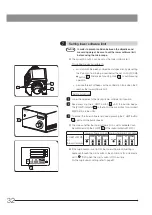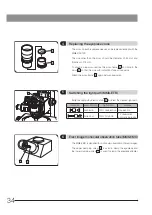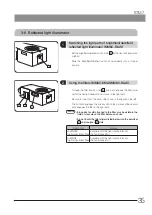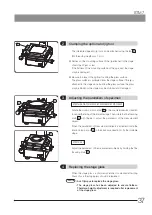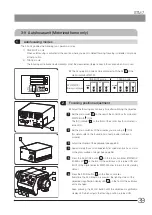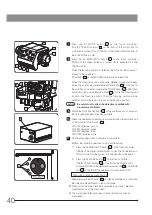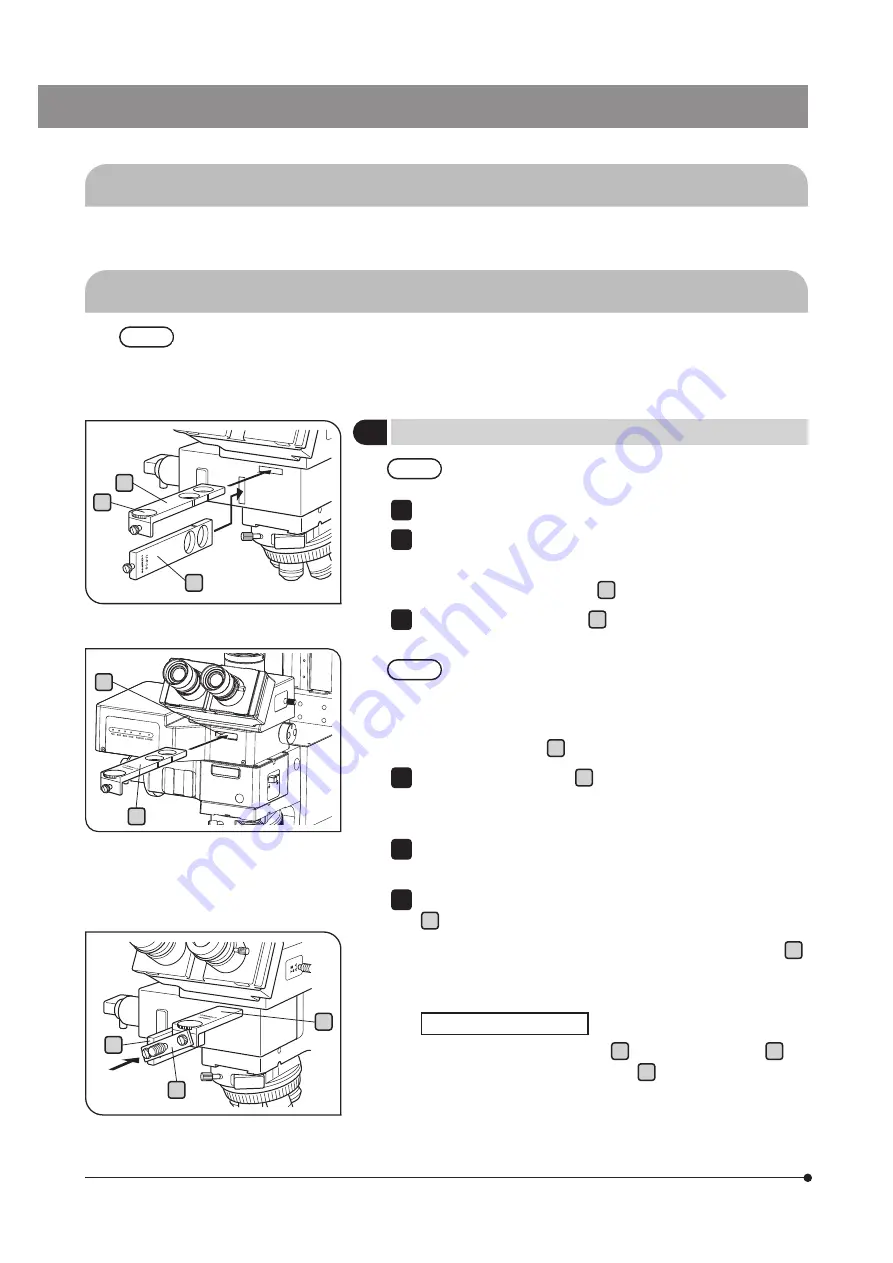
46
44
OBSERVATIONS (using MM6C-KMAS or MM6C-RLAS)
} No description is given on the brightfield reflected light arm MM6C-VL because only the brightfield observation is in
question in this section.
·
Replace the polarizer after about 2000 hours of continuous use because its performance degrades after
it has been subjected to light for a long period.
·
When transmitted light observation is to be performed, first remove the polarizer from the light path.
Otherwise, flare may occur in the field of view.
CAUTION
4-1 Reflected light brightfield observation
4-2 Reflected light DIC observation
1
Mounting the analyzer and polarizer
At this stage, do not engage the DIC slider in the light
path yet.
Approximately focus on the specimen using the 10X or 20X objective.
Remove the dummy slider from the analyzer insertion slot.
} When using the autofocus unit STM7-AF, remove the dummy slider
from the analyzer insertion slot d of the autofocus unit.
Hold the analyzer U-AN360-3 a with the name plate facing up, then
mount the analyzer into the analyzer insertion slot.
When using the U-AN, take care not to push it in past the
click position. Otherwise, the U-AN may get stuck in the
back and be incapable of being removed.
} When using the autofocus unit STM7-AF, insert the analyzer to the
analyzer insertion slot d of the autofocus unit.
Mount the polarizer U-PO3 b by inserting it into the light path of the
reflected light arm MM6C-KMAS or MM6C-RLAS so that the surface
with indications faces right.
Place a specimen with high reflectance, such as a mirror, on the stage
and approximately focus on it.
While looking through the eyepieces, rotate the analyzer rotation dial
c so that the light is darkest.
} The cross-Nicol position is obtained when the index on the dial c
comes on the outside position. Rotate the dial around that position
so that the light looks darkest.
Using the Connecting Plate
When the analyzer U-AN360-3 f and polarizer U-PO3 g are
combined using the connection plate e provided with the polarizer
(when the MM6C-KMAS is in use, or provided with the MM6C-RLAS
when this is in use) and clamped with the clamping knob as shown
in the figure on the left, they can be engaged in or disengaged from
the light path together.
CAUTION
1
2
3
CAUTION
4
5
6
a
c
d
b
g
e
f
a

